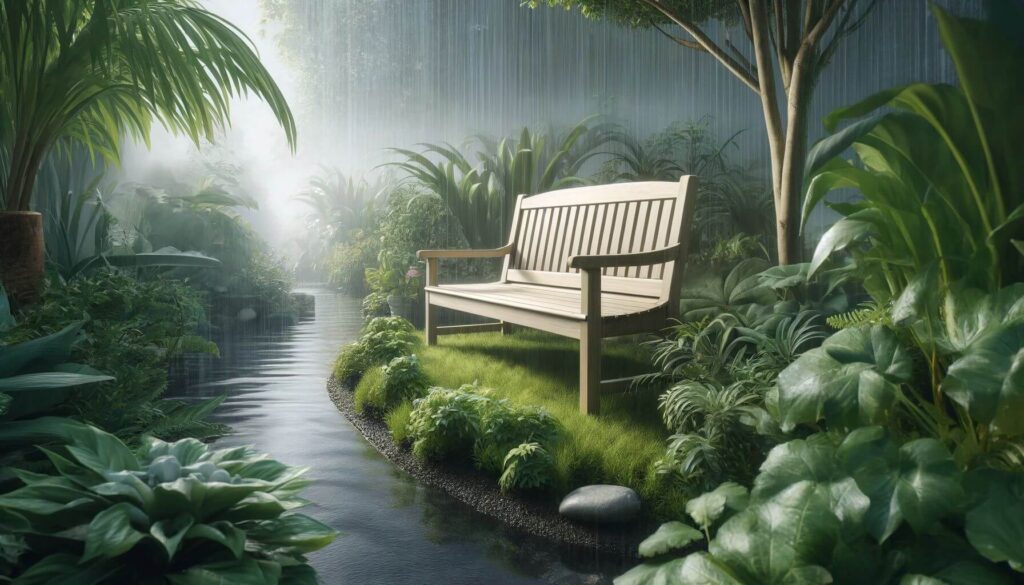
Selecting outdoor furniture requires careful consideration of its resilience against diverse weather conditions. Polywood is celebrated for its toughness and eco-friendliness. It stands up to harsh climates without losing style or comfort. Let’s examine Polywood’s robust manufacturing process and its ability to endure elements like sun, rain, snow, and wind.
Polywood’s Manufacturing Excellence

Recycled Materials to Durable Lumber
Polywood transforms recycled plastics into high-density Polywood lumber. This process highlights sustainability and a closed-loop production system. It turns waste into durable, stylish furniture.
Engineering for Weather Resistance
The manufacturing of Polywood includes specific technologies and treatments. These enhance the material’s resistance to environmental stresses, ensuring longevity.
Durability Against the Elements

Sunlight and UV Exposure
Polywood incorporates UV inhibitors to prevent fading and degradation from prolonged sun exposure. This protection ensures the furniture maintains its color and strength over time.
Moisture and Humidity Resistance
Polywood’s non-porous surface prevents water absorption. This resistance helps it ward off rot, mold, and mildew, common issues in less durable materials.
Temperature Fluctuations
Polywood withstands extreme temperatures without cracking, splitting, or warping. This resilience makes it suitable for a variety of climates.
Wind and Weather Endurance
The weight and structural integrity of Polywood furniture help it stay put in windy conditions. This feature is critical for maintaining stability in outdoor settings.
Choosing Polywood for Design Innovations

Aesthetic Versatility
Polywood furniture comes in a variety of styles, colors, and finishes. Durability does not compromise its design, allowing it to fit any aesthetic preference.
Functional Adaptations
Despite its solid construction, Polywood is designed for comfort. It includes contoured seating and ergonomic features, enhancing user comfort.
Comparative Analysis
Polywood vs. Traditional Wood
Let’s do a comparative analysis of polywood and traditional wood. It focuses on longevity, maintenance needs, and cost-effectiveness over time. Polywood outlasts traditional wood with minimal upkeep.
Polywood vs. Other Synthetic Materials
Compared to other synthetic outdoor furniture materials, polywood stands out. It is superior in terms of environmental impact and durability. Its production involves recycling, which lessens its environmental footprint.
Final Thought

Choosing polywood for outdoor spaces brings numerous benefits. Its unmatched durability and design flexibility make it a wise long-term investment for gardens and patios. You should consider polywood to ensure countless seasons of comfort and style. This sustainable choice supports both personal and environmental well-being.



